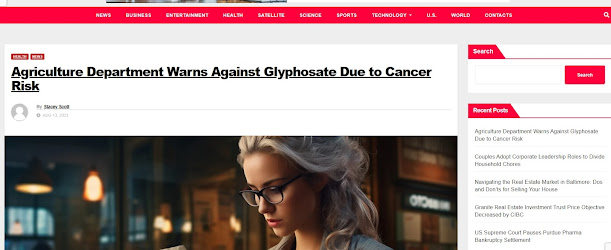Predicting the Future -- Seralini Rat Paper Redux
"I don't need a crystal ball; I have a crystal brain."
--Adam Carolla
Today the famous Lumpy Rat paper was published by Seralini and colleagues. I should say RE-published because it is basically the same content published in 2012, that was later retracted from the journal. Personally, I was glad to see him attempt to publish it again. The literature is where the conversation should happen, and if the work is of good quality it will be reproduced and expanded upon.
If the work is of poor quality it will die a scientific dead end, cited only by the same authors in future papers with no additional progress. Kind of like the rest of the Seralini work.
Unfortunately the general public doesn't follow the scientific conversation. People only pick the monologues they agree with, and a single flawed study from a biased lab carries as much weight (or more) than a thousand agreeing reports from 800 different groups.
It was disappointing to see that Seralini's group didn't even try to fix the obvious and egregious errors and omissions. They even took on a snarky commentary in their Competing Interests section, stating,
"The author(s) declare that they have no competing interests, and that, in contrast with regulatory assessments for GMOs and pesticides, they are independent from companies developing these products."
... which is amazingly unprofessional, off base and not scientific. It is a political statement. The journal and the editors should be ashamed.
However, all of this comes as no surprise, as back on March 3, 2014 I wrote in this blog:
"It is conceivable that the data may find publication in a smaller low-impact title, like Carman's article in the Journal of Organic Systems, an apparently online only journal with no impact factor and limited editorial rigor. The credulous anti-GMs don't understand science, let alone what the quality of the venue means."
Some may consider this prophetic, but it is easy to see the future when the future is painfully obvious. Seralini appears to have quite an ego to sustain, and the retraction from an okay journal must have hit pretty hard. It was almost certain that he'd attempt to republish the work-- but it isn't going to a decent journal. Today it came out in Environmental Sciences Europe, a journal with a less-than-rigorous grasp on reality, a clear anti-biotech slant, and the journal that has published such duds as Benbrook's famous paper on increasing pesticide use that used interpolated and extrapolated data (because actual numbers didn't exist).
It boils down to this-- if these data were significant, if the experiments were good, and the interpretations sound, this would not be buried in the depths of a crappy journal. If there was hard evidence that our food supply truly caused tumors, it would be on the New England Journal of Medicine, Science, Nature, or maybe Cell if he wanted to go slumming. But it's not there. It is in a tiny, obscure journal that has quite a visible agenda, and that's the only thing visible about it.
And that's where it belongs. Let him have his day in the sun. History will not remember him for his science. It will remember him as a disgraceful hack that let personal agenda affect adoption of safe scientific technology. He'll be the guy that fooled millions with low-quality data.
It is very sad, because I'd rather be writing blogs about exciting science and new findings. Instead we're back to this nonsense. Luckily, it will slowly disappear into time, like Puzstai's lectins, Huber's mystery organism, and the rest of the alarmist junk never published or never reproduced.
It does not take a crystal ball to see that.

